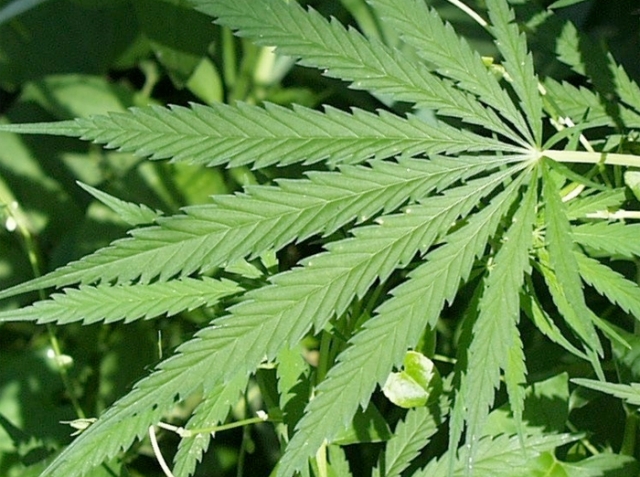Interested in the Cannabis Industry?
Marijuana: Anticipating Changes in Legislation
A recent press release from the “Women Grow: Kootenay Chapter” says,
“Are you interested in cultivating a career in the cannabis industry? Would you like to know more about cannabis and the future of the industry in general?
“We invite you to join us on the evening of Thursday, January 7th in the “Hume Room” of the Hume Hotel for the Women Grow: Kootenay Chapterkick-off event. This will be an educational evening featuring presentations by distinguished individuals in thecannabis industry, including advocates, C.E.O.’s, dispensary directors, and Nelson Mayor Deb Kozac discussing the current state of cannabis related issues in our municipality. Presentations start at 7:00 P.M.
“This event is guaranteed to bring with a plethora of valuable information and networking opportunities to interested individuals and entrepreneurs alike! We encourage people of all gender identities to participate.
“Early bird tickets are $25, and can be purchased online at eventbrite.ca, or at the door for $30.
“Event sponsored by PlanC BioPharmand The Kootenay’s Medicine Tree.”
Before the Kootenay’s cannabis industry can become legal, our Parliament will have to introduce new legislation. None of us really knows what that legislation will say, or when it will be enacted, or when it will come into force.
Meanwhile, for those who may not be familiar with research findings on the health effects of marijuana, I’m summarizing some of the available information for you below.
First, though, let’s consider the work of an early physician, known as “Paracelsus,” born in 1493 with the impressive moniker Philippus Aureolis Theophrastus Bombastus von Hohenheim. He was considered a radical and faced opposition for his insistence upon observing and drawing conclusions from those observations, rather than relying on the dictates of ancient texts. He is credited with originating the discipline of toxicology; he wrote, “Dosis facit venenum” — commonly translated as “the dose makes the poison,” or, to be more explicit, substances that we know to be poisonous may be harmless in a small enough dose, and conversely, substances that we consider harmless can be lethal if consumed to excess.
For example, alcohol is toxic, but most of us have the ability to detoxify small amounts in our bodies. Water is considered harmless, but there have been several deaths from over-consumption of water. In 2007, Jennifer Strange died at the age of 28 after participating in a water-drinking contest, and David Rogers also died that year from drinking too much water. Other water toxicity fatalities include Shaun McNamara, 35; Zyrees Oliver, 17; and, this year, a baby died because his mother added water to breast milk to make “stretch” the milk and make it last longer, not realizing that it could harm her child.
The benefits of “medical” cannabis for some conditions are fairly widely known: a Wikipedia entry sums them us as follows:
“Medical cannabis, or medical marijuana, refers to the use of cannabis and its cannabinoids to treat disease or improve symptoms. The use of cannabis as a medicine has not been rigorously scientifically tested, often due to production restrictions.[1] There is limited evidence suggesting cannabis can be used to reduce nausea and vomiting during chemotherapy, to improve appetite in people with HIV/AIDS, and to treat chronic pain and muscle spasms.[2][3] Its use for other medical applications is insufficient for conclusions about safety or efficacy.”
Wikipedia points out that, though THC and cannabidiol are the principal chemical components found in marijuana, there are at least 83 others.
A comprehensive article in Maclean’s magazine by Ken McQueen, “Why It’s Time to Legalize Marijuana” was published in 2013. In it, McQueen discusses marijuana and the downsides of the then-government’s “war on pot;” he pointed out that information on the medical benefits of marijuana is difficult to find, because research has been hampered by anti-marijuana legislation. However, he was able to find some research, including a study that, he wrote,
“… comparedlung function over 20 years between tobacco and marijuana smokers. Tobacco smokers lost lung function but pot use had the opposite effect, marginally increasing capacity, said the study published in the Journal of the American Medical Association. Cannabinoids in marijuana smoke “have been recognized to have potential antitumour properties,” noted a 2009 study by researchers at Brown University. A study looking at marijuana use and head and neck squamous-cell cancer found an increased risk for smokers and drinkers, while “moderate marijuana use is associated with reduced risk.” Certainly it is past time for serious and impartial study of the benefits and risks of medicinal marijuana, something that decriminalization would facilitate.”
Marijuana is used by chronic pain sufferers, and has been used to prevent seizures, and to reduce the palsy of Parkinson’s disease, and to relieve insomnia. . Some people write that it benefits glaucoma sufferers. But scientific studies proving its efficacy for these things are still hard to find.
As you will see from the information below, it is easier to find evidence that has been gathered for the downsides of cannabis. As McQueen mentioned in his article, when our new parliament changes the laws on marijuana, we may see a dramatic increase in research that will focus on the medical uses of marijuana, and not just the potential harm. Police departments across the land have recognized that marijuana use causes less harm than alcohol or tobacco.
The early 1970s produced the LeDain Royal Commission on the non-medical use of drugs, and it concluded that there was no scientific basis for the criminalization of marijuana, but that its use among adolescents should be discouraged. A Senate Report in 2002 concluded that the costs of enforcing the prohibition against marijuana were “disproportionately high given the drug’s social and health consequences.” The LeDain Commission and the Senate report’s findings were not given any effect.
Many deaths have been caused, directly or indirectly, by alcohol and tobacco, not to mention bad temper, inattention at the wheel of moving vehicles, and gunshot wounds. It is commonly claimed that marijuana has never killed anyone: you can find many such assertions on the internet. But is that true?
As with any other substances, cannabinoids have different effects depending on the dosage — and other factors. Here is a link to a news article about three recent deaths in Colorado related to consumption of perfectly legal marijuana-infused treats. Here is another article (click on the link) discussing the conflicting claims of pro-marijuana activists and anti-marijuana activists about the benefits and hazards of marijuana use.
Following the death of a 31-year-old woman who had smoked marijuana shortly before her death of cardiac arrest in England, and the separate deaths of two young men in Germany of cardiovascular complications “evoked by smoking cannabis,” according to researchers on their cases, the chief forensic toxicologist for the San Franciso Medical Examiner’s Office, asserted that marijuana has been confirmed to have had harmful effects on the heart in some susceptible individuals.
Nikolas P. Lemos stated, “The potential cardiotoxicity of cannabis has been reported in peer-reviewed abstracts as well as scientific proceedings before, including by my team. This case report adds two more cases from Germany, but since late last year, we have known and reported on this drug’s potential cardiotoxic effects in some parts of the general population,” he said.
The researchers at the Institute of Legal Medicine, University Hospital Duesseldorf in Germany, who wrote the report, stressed that the risk of harmful cardiovascular effects from marijuana use in the general population is low, but it is higher in people who have cardiovascular issues. They noted that people at risk for cardiovascular disease should avoid using cannabis.
Lemos said, “We simply cannot, any longer, adhere to the old mentality that ‘marijuana does not kill,’ … We are now seeing evidence from my office and elsewhere that it just might.”
Marijuana use during pregnancy and nursing: Does marijuana use by a pregnant woman affect her baby? Bearing in mind what Paracelsus said, the effects found by studies show that babies born to women who have used marijuana regularly during their pregnancy –especially late pregnancy — tend to have lower birth weight and a higher incidence of developmental delay and behavioural problems during childhood. For more detail, here is an article summarizing research on the topic.
For more detail on the hazards of marijuana use during pregnancy and breast-feeding, some findings from a number of different studies are summarized in an article for healthcare professionals published in the California Society of Addiction Medicine site.
On the other hand, there are reports of women who have had such severe nausea and vomiting during their pregnancy that their health and the health of their unborn child was in danger, and who obtained relief only through judicious use of marijuana. A few spoke to “Vice” magazine about it, as related in this article: http://www.vice.com/en_uk/read/the-women-who-smoke-weed-while-pregnant-420.
When Canada has new legislation governing the production and use of marijuana, we may learn much more about both marijuana’s benefits and its hazards. And the future of the cannabis industry will take shape. If you’re interested, you can attend the gathering announced above at the Hume Hotel on January 7, 2016.


























